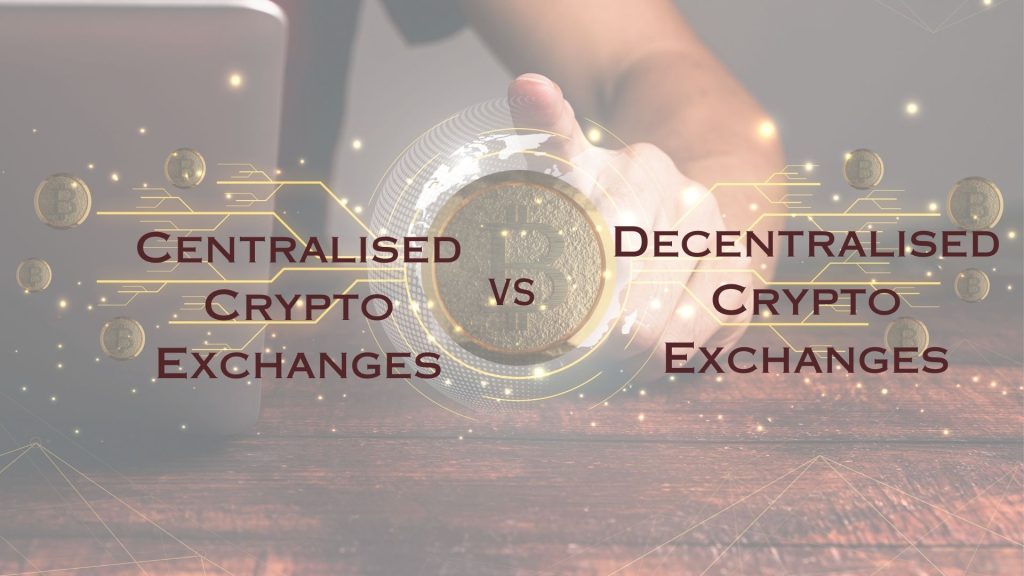
Centralised vs Decentralised Crypto Exchange – Key Differences
The exchanges that allow trading cryptocurrency are either centralised or decentralised. The most popular preference of first-time crypto investors is the centralised exchange.
The centralized exchanges provide a safe and user-friendly experience as the trading takes place with the presence of a central entity. On the other side, the decentralized exchanges offer ultimate control over your assets and funds.
In this article, let’s understand the key differences between centralised vs decentralised crypto exchanges.
Centralised Crypto Exchange
Centralised Crypto Exchange is one of the approaches to manage the trade and transactions of cryptocurrency. This exchange operates with a centralised entity that acts as an intermediary between the crypto buyers and sellers. It stores digital assets on behalf of the client, and the trading happens according to the terms and conditions.
The best examples of centralised crypto exchanges are Binance and Coinbase.
Decentralised Crypto Exchange
When the exchange is decentralised, there is no intermediary between buyers and sellers.
The decentralised crypto exchanges work with a noncustodial blockchain system that allows direct peer-to-peer transactions.
The self-executing blockchain-based applications, known as smart contracts, control the whole process, and the traders have full access to their assets and are solely responsible for the security of their funds.
Decentralised exchange examples include PancakeSwap and Uniswap.
What are the differences?
The main difference between centralised and decentralised exchanges is whether or not a third party is present.
Apart from that, the centralised exchange is more popular than the decentralised one because of its authenticity and easy access. However, in recent years, the preference for decentralised exchanges has been rising due to their advantages in terms of security, privacy, and control over funds.
Centralised vs Decentralised Crypto Exchange – General Differences
Below are some general differences to easily understand both the types:
Control
The control of centralised exchange is in the hands of a single entity, but when it comes to decentralised exchanges, smart contracts govern the trading process.
Security
Centralised crypto exchanges are more secure as they are governed and monitored by the central entity. But that’s not the case with the decentralised crypto exchange, where the security is on individual wallets and smart contacts.
Anonymity
Centralised crypto exchanges compromise privacy as KYC verification requires personal information. The decentralised crypto exchange allows anonymous trading, keeping up the user’s privacy.
Fees
The fees charged by a centralised exchange are higher than the decentralised crypto exchange. It is because of the cost associated with centralised control and infrastructure.
Access
When used, the centralised exchange is better to access and operate. The other will seem difficult, requiring more technical knowledge as it involves more personalization, which depends on how the individual uses it.
Liquidity
The liquidity is higher in centralised crypto exchanges due to the centralised control over order books and funds. The decentralised crypto exchange has lesser liquidity because of the fragmented order books.
Conclusion
Having said the difference, some traders choose both centralised and decentralised exchanges. For example, a trader can use decentralised exchanges for most transactions and then transfer crypto to a centralised crypto exchange to convert their holdings to fiat currency with faster liquidity.
Explore the world of financial services and trading solutions. Join the Liquidity24 community now!
Connect with us today and scout new possibilities in the financial markets.






